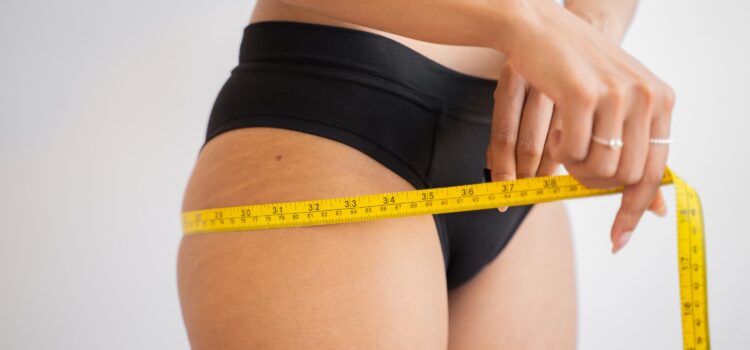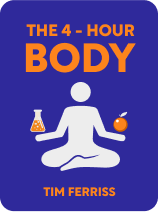

This article is an excerpt from the Shortform book guide to "The 4-Hour Body" by Timothy Ferriss. Shortform has the world's best summaries and analyses of books you should be reading.
Like this article? Sign up for a free trial here .
What is body recomposition? How do you take measurements for body recomp?
The 4-Hour Body is all about body recomp and how to achieve it. In order to move from fat to muscle, you need to be able to accurately track the measurements.
Keep reading to better understand how to take measurements for body recomp.
Measurements for Body Recomp
Weighing yourself doesn’t give you much information about your body composition because a scale can only tell you your total body weight, not how much of that weight is fat versus muscle. (For example, when the author’s father was trying to lose weight, he lost the least amount of weight during the time he gained the most muscle.) To avoid doubting yourself or becoming discouraged, measure body composition in addition to total weight to understand your progress on body recomp.
Measuring Body Fat
There are multiple ways to measure body fat. The author’s top three are:
- Dual energy X-ray absorptiometry (DEXA). DEXA is a body scan that reveals body fat percentage, bone density, and how weight is distributed over different parts of the body. A DEXA session takes 5-10 minutes and costs $50-100. It’s a medical test, so you won’t find it at a health club or gym.
- BodPod. BodPod measures body composition using air pressure and it can measure people over 500 pounds.
- Ultrasound, specifically BodyMetrix. BodyMetrix is a wand that you point at a specific part of your body, and it tells you how thick the fat is in that area. It’s quick and easy to use and the wand costs between $500-2000. Note: Ultrasound can only measure fat under the skin, not fat around organs.
Other options are:
- Eyeballing. Compare your appearance to pictures of people at particular body fat percentages or use the following descriptions of each percentage:
- 20%—no apparent muscle definition (developed muscles) and little muscle separation (grooves between individual muscles).
- 15%—some muscle separation in the shoulders and arms.
- 12%—more muscle separation, especially in the chest, back, and abs.
- 10%—deeper muscle separation in most areas of the body.
- 7-9%—deep muscle separation, arms veins are visible, abs are always visible, and the face is angular.
- 5-7%—you look like a bodybuilder: Veins are visible in more of the body and there are grooves in muscles when flexed.
- Calipers. These measure the thickness of a fold of skin (and the fat underneath.) Calipers can only measure fat under the skin, not fat around organs, and they also pick up water under the skin. When using calipers, use the same calculating algorithm each time you measure and the same trainer. The author recommends the 3-point or 7-point Jackson-Pollock algorithm and at a minimum, something that includes a leg measurement. If you’re over 30% body fat, avoid calipers.
- Bio-impedance scales. In addition to weight, these scales measure how quickly electricity passes through the body (it travels more slowly through fat than other substances). Bio-impedance measurements are influenced by how much water you consume, so make sure your body conditions are the same every time you measure. For example, drink 1.5 liters of water right after you get up in the morning, wait 30 minutes, urinate, and then measure.
No matter what tool (or tools) you use, don’t compare numbers measured by different tools. Each of the tools measures a little bit differently, so track relative changes, not absolute values.
Measuring Your Circumference
In addition to measuring your body fat percentage, it’s also useful to measure your circumference, because as you recomp, different parts of your body will change size. Measure circumference by wrapping a tape measure around the following four parts of your body:
- Mid-bicep on both arms
- Around your navel
- The widest point on the hips
- Mid-thigh on both legs
Add up all these numbers to get your total inches (TI). As you recomp, your TI measurement should shrink.
Calculating Lean Body Weight
To calculate your lean body weight (weight from everything besides fat), simply multiply your total weight by your body fat percentage to get the percentage of your weight that comes from fat. Then, subtract the weight of your fat from your total body weight.
For example, if you weigh 100 pounds and your body fat percentage is 10%, then your weight from fat is 10 pounds. Subtract ten pounds from 100 to get 90 pounds of lean body weight.
Body Recomp Goals
No matter how much fat you want to ultimately lose or muscle you want to ultimately gain, start with a smaller recomposition goal. If you’re under 120 pounds, your goal is 10 pounds of body recomp. If you’re over 120 pounds, your goal is 20 pounds.
If you prefer body fat goals to weight goals:
- If you’re obese, your initial goal body fat percentage is 20% for men and 25% for women.
- If you’re just a little heavy, the goal is 12% for men and 18% for women.

———End of Preview———
Like what you just read? Read the rest of the world's best book summary and analysis of Timothy Ferriss's "The 4-Hour Body" at Shortform .
Here's what you'll find in our full The 4-Hour Body summary :
- How to do the least amount you need to do for the results you want
- Why you need a cheat day in your diet
- How to improve everything about your body, including sleep, sex, and longevity






